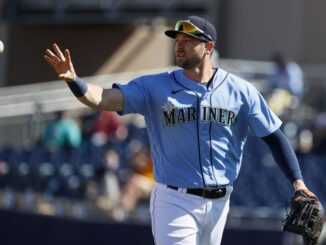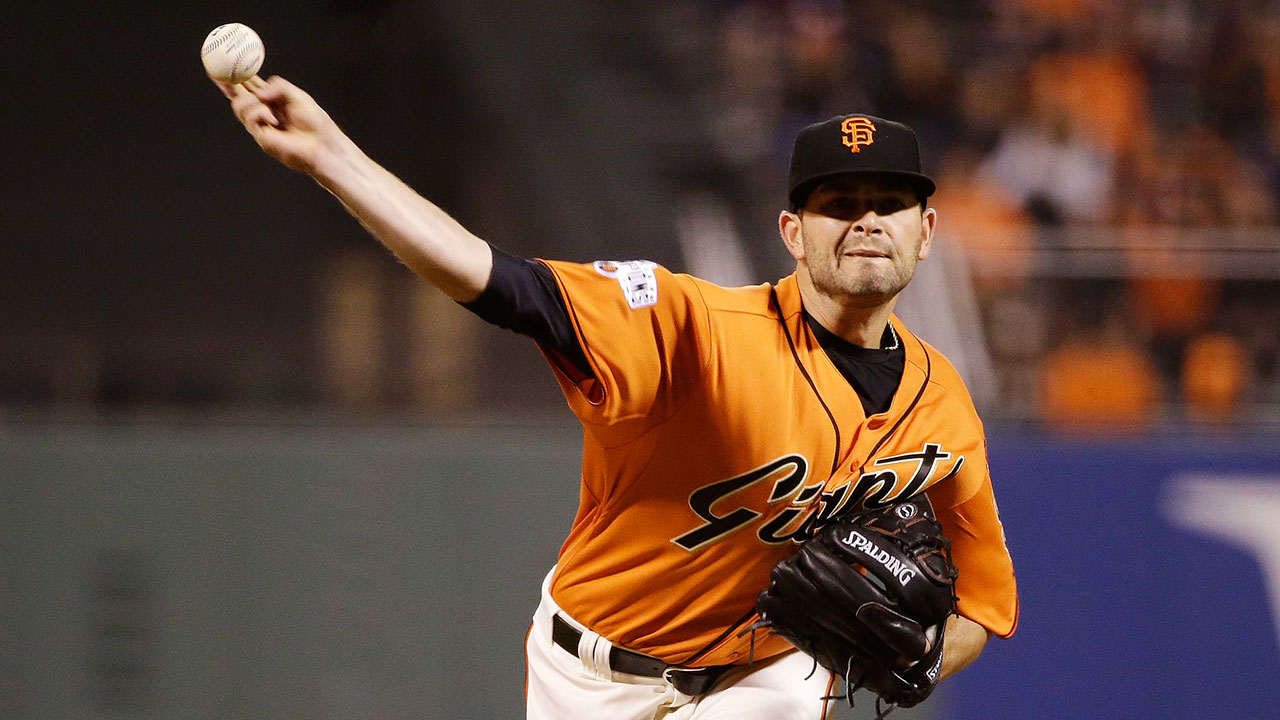
Last week, as pitchers and catchers reported to Peoria, Arizona, we took a look at the Seattle Mariners infield. This week, with Spring Training games starting up, we’ll take a look at the projected outfield for the 2018 Seattle Mariners. The following players project to play well over 85% of the time at their respective positions, as usual, barring injuries. In an up-coming column, we’ll consider the bench and thus the fourth or fifth outfielders, and Nelson Cruz will be reserved for an article comparing the premium DH’s in the American League. So, here are your 2018 Seattle Mariners outfielders.
CF – Dee Gordon
The Seattle Mariners projected opening day center fielder, barring any unforeseen injury, has never played the outfield in the majors. Dee Gordon, who was acquired from the Miami Marlins this off-season along with international signing money back when the Mariners thought they were in the running for Shoei Ohtani, has played both SS and, more recently, 2B in the majors. While Gordon was a bit overmatched at short (-14 defensive runs saved in 1320.2 innings), he was solid at second with 13 defensive runs saved (DRS) in 4,462.2 innings.
Theoretically, a move from 2B to CF is feasible along the defensive spectrum originally posited by Bill James as far back as the 1980’s in his Baseball Abstract. The defensive spectrum looks like this:
1B – LF – RF – 3B – CF – 2B – SS
Any move from right to left is likely to succeed as each position is theoretically easier to play in that direction. Moves from left to right are usually unsuccessful as the positions get more difficult as you move along the spectrum. Gordon would be making a leftward move on the defensive spectrum and the speculation is that his plus-plus speed – 64, 58, and 60 stolen bases in each of the last three seasons that he’s played at least 100 games – should make the transition all the smoother. But, still…he’s never played the outfield. We’ll see.
As for the bat, Gordon brings a great batting average, if not great OBP, to the Mariners. He has a lifetime .293 BA, but only a lifetime .329 OBP with 4.5% walk rate. With the aforementioned speed, expect Gordon to hit near the top of the lineup, if not lead off. ZiPS projects Gordon to hit .289/.315/.352 with 53 SB and play in about 150 games. All the projection systems are assuming positive contributions on defense and, therefore, range between 1.8 and 2.6 WAR.
Gordon’s offense should be a slight improvement over Jerrod Dyson, who just recently signed with the Arizona Diamondbacks. It’s hard to see Gordon being better than Dyson in the field (55 DRS in CF over 3,662.0 innings) but Gordon should stay on the field more than Dyson, who has only once played 120 games, with just 111 last season. This season, Gordon is projected by ZiPS for 34 more games than Dyson and about half a win more. So, if everything goes well with the transition to the outfield, the Mariners improved their play in CF by bringing in Gordon.
RF – Mitch Haniger
In just his second season in the big leagues, Mitch Haniger played in 96 games, starting 91 in RF, and hit a healthy .282/.352/.491 with 16 HR. With a solid weighted runs created plus (wRC+) of 129, roughly 29% better than league average, Haniger provided the Mariners a surprising 2.5 fWAR.
The questions going forward for Haniger are whether last season was a baseline performance, leaves room to improve, or sets the table for regression? He was drafted out of college in 2012 and just turned twenty-seven, not a young up-and-comer by any means. The major projections systems are of two minds for Haniger’s 2018 campaign – three see regression – one sees continued improvement.
Fans is the most bullish on Haniger, projecting 594 PA in 143 games with a slash line of .279/.354/.499 and 23 HR. A repeat 129 wRC+ with extra playing time has Fans projecting Haniger adding 3.9 WAR to the M’s season. The Dave Szymborski product, ZiPS (sZymborski Projection System), is the most bearish on Haniger. ZiPS projects only 126 games with a .251/.320/.444 slash line, 20 HR, and a 105 wRC+. In contrast to the 3.9 WAR projected by Fans, ZiPS pegs Haniger at a sub-two WAR of 1.9. Depth Charts and Steamer lean closer to Fans for Haniger’s playing time, but closer to ZiPS in the overall production.
So, do the Mariners have a RF who will perform in the echelon just below All-Star or do they have a RF who will serve pretty much as an everyday player? As the old saying goes, ‘that’s why we play the game.’
LF – Ben Gamel
In left there is much less speculation than in right about what the Mariners will get in 2018. Ben Gamel is a light hitting, slightly below average fielder, who would more than likely be a fourth outfielder on a contender.
In 2017, the 25-year-old played in 134 games and hit a respectable .275/.322/.413 with 11 HR. A wRC+ of 99 placed him a tick under the average MLBer and he contributed 1.6 fWAR. Baseball Reference’s version of WAR measured his 2017 season at 1.0.
Fans is the only projection system to see Gamel with a wRC+ above 100 (105 to be precise), while the others have him in the 80’s. ZiPS is the most bearish with an 85 wRC+. Fans is also the most generous in projecting a WAR of 1.3, while Depth Charts projecting 0.5, ZiPS 0.4, and Steamer 0.3.
If the Mariners find themselves within shouting distance of the playoffs near the trade deadline, an upgrade in left field seems a likely target, perhaps taking payroll off the hands of the loaded New York Yankees outfield in the person of Brett Gardner or some other creative move. GM Jerry Dipoto is nothing, if not creative.
Outfield Grade C with B- upside
There are just too many question marks in the Mariners outfield for 2018 to grade it higher than a C, or simply average.
Dee Gordon has never played the outfield, and while he should transition well to his new position, there could be some rough waters ahead. Mitch Haniger could emerge as a very good player in right, or he could regress to an average player in right. And, Ben Gamel really shouldn’t be an everyday player in the big leagues, according to three out of four projections systems.
The upside for the Mariners outfield as currently constituted is a borderline 4 WAR player in Gamel, a solid 3 WAR player in Gordon, and, with a career year, a 2 WAR player in Gamel. That’s roughly 9 WAR in the outfield. Oh, by the way, Mike Trout projects as an 8+ WAR player on his own.
The downside could be ugly. Picture a lost Dee Gordon in the spacious confines of the-soon-to-be NOT Safeco Field. Imagine a 27-year-old, never really a prospect Haniger reverting to his 40/45 grade. And think about Ben Gamel being Ben Gamel. Then the Mariners outfield could struggle to post 5 WAR.
The reality is probably somewhere in the middle.




